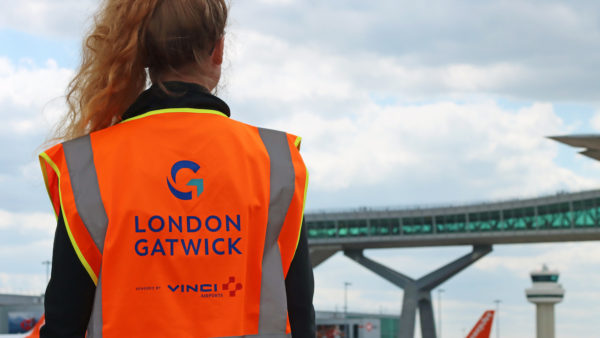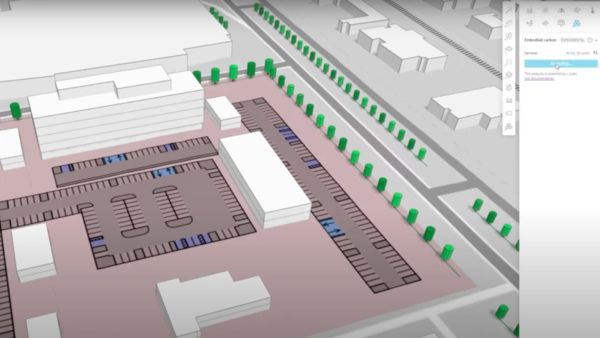Ben Highfield, surface product manager at Microsoft UK, looks at where the construction sector is at in terms of embracing digital advances.
As digitisation continues to transform how we work, communicate and engage with society, it’s clear that embracing technology is no longer a forward-thinking vision, but an essential aspect of any successful business strategy.
Like many industries entering this new digital age, the construction sector is experiencing a period of rapid change, with emerging technologies transforming the ways in which buildings are designed and created, as well as establishing new collaborative working practices.
The ultimate goal here is to harness technology to help create better, more efficient buildings and this is being driven to a certain extent by the UK government’s commitment to a “Digital Built Britain”. This initiative aims to introduce a new generation of smart infrastructure and construction, reducing project costs, and timescales through digital innovation and the impact of this commitment to digitalisation is already evident within the sector.
Indeed, recent research we conducted in partnership with the Royal Institute of British Architects (RIBA) reveals that 87% of construction industry professionals agree that digital technologies are already transforming the way they work, with 85% also agreeing that the sector will be further disrupted by technology over the next two years.
Interestingly, the study also indicates that the construction sector is already attuned to the fact that digital technology adoption is not an optional investment, with over half of construction professionals (55%) linking digital technology adoption to business survival.
Additionally, participants in our research are clear in their understanding of the many benefits of digital transformation, in particular, productivity and efficiency gains, with 79% of survey respondents saying that adopting digital technologies leads to improved project efficiencies.
Such a heightened awareness for the place and importance of technology within business practices is clearly an industry-wide response to the ever-evolving nature of the construction sector, which has long been subject to digital innovation.
Take architecture, for example. Traditionally reliant on blueprints and 2D models, then 3D computer-aided design, the profession has been repeatedly transformed by technological advances. The sector has now embraced BIM, with 70% of architectural practices now using the technology, as well as digital innovations such as Microsoft HoloLens, which is transforming the way architects present designs – bringing them to life and allowing colleagues and clients alike to explore, assess and agree on design choices.
Appetite for immersive technologies clearly demonstrates how the industry is disrupting established working practices to reduce costs, increase productivity and improve client outcomes. As our findings highlight, adoption looks set to increase, with over a third of architects (36%) using at least one form of mixed, augmented or virtual reality already.
What’s more, the report found that many architectural practices plan to expand their use of immersive technology and use other variants in the near future, underlining industry consensus around the importance of these technologies in transforming business practices.
Despite this, with any new opportunity comes certain challenges and it is clear that the industry still faces significant obstacles in the journey towards digital transformation. Cost in particular is considered to be the most significant barrier to achieving the potential that digital transformation can bring according to our research, particularly when it comes to funding new investments and upskilling staff.
Alongside this, organisational culture is considered to significantly impede progress in the industry with nearly half of survey respondents (48%) highlighting a lack of company-wide digital skills as a key challenge, with many also citing that weak leadership, a lack of willingness to change and slow-decision making as detrimental to progress.
To truly capitalise on the potential of digital transformation, it will be vital for the construction industry to create a culture ready and willing to embrace digital transformation. After all, digital transformation is not just the adoption of a new set of technologies, but also a fundamental shift in culture, supported and facilitated by technology.
Creating a culture where technology and culture come together is vital to success and requires organisations to create a working environment where employees feel empowered to explore new innovations and business practices, whilst also feeling equipped with adequate training to ensure they have a strong understanding and sense of involvement in change initiatives.
We can certainly expect digitisation to break the confines of the building envelope, transforming the design and operation of whole towns and cities and it’s down to organisations themselves to keep pace with change.
Like any sector facing huge disruption, companies embracing innovation and harnessing the power of new technologies will emerge as leaders in their field.
Comments
Comments are closed.
















Good informative read about the current digital nature of the construction industry.
All technical staff in our office have undertaken extensive training including VR so that, as you said above: “feel empowered to explore new innovations and business practices”.
Ifty
Lawray Architects has spent a lot of money over the last few years transforming the business culture, processes and procedures and the underlying supporting technologies, whilst providing staff with necessary training, mentoring and support. This has been driven from Board level down and from the shop-floor up and both have met in the middle to put the business in a very good position.
BIM is very much a given throughout the business and on all our projects now.
Our technical delivery is in a very good place and we are now focusing on design and collaboration, breaking down barriers and using new technologies to drive a new business vision. All looks good for us.